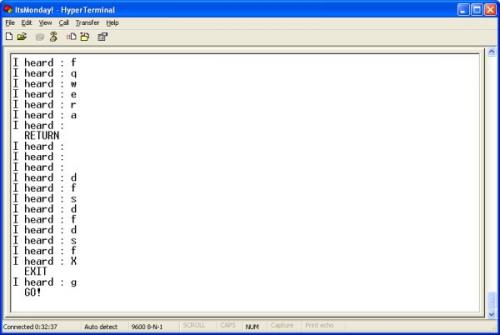Avr Gcc Printf Serial Port
Nov 19, 2011 - Arduino provides you with its own implementation of Serial.print(), Serial.println() and Serial.read() methods. At the same time AVR Libc has proven printf(), puts() and getchar() functions. This article explains. This enables us to use AVR Libc provided functions to read and write to serial port. Int main(void). Also, do you have any example code using a virtual serial port where stdio/printf are setup to write to the USB? A-Star 32U4 Prime and AVR GCC.

Working with AVR microcontroller Communication Port. Autodesk Maya 2015 Crack Kickass Torrent on this page. Most PC’s and notebooks nowadays has replaced this port with the USB (Universal Serial. AVR-GCC 4.3.0. Jun 14, 2012 - First off, if you're looking at that title and thinking it's flame-bait, please hold off. What [Ihsan Kehribar] is working with is another way to get some feedback for what's going on with your Arduino project. Or really any AVR project that uses an ISP connection. He's added text output for AVR programs similar to.

If anyone has a better version please feel free to remove or edit this version. You can also avoid using Serial.print() altogether and.
Hooking up printf() on AVR The avr-gcc C library, avr-libc, provides the printf() family of functions. You can use them in Arduino sketches after some preparation.
General details are in the avr-libc documentation for file stdio.h. These notes are specific to the Arduino development environment. You must: • create a FILE structure instance, • create a character output function, • write the function address into the FILE structure, • assign the structure address to that of 'stdout'.
Printf() makes your executable object ~1000 bytes larger, so you may not want to use it if size is a problem.
When writing C program code for 8-bit Atmel AVR microcontrollers and using Atmel Studio, functions such as printf() and sprintf() do not print floating point numbers of type float. Instead of printing a float to a string or standard output, a question mark is printed. Question Mark is Printed from the sprintf Function Instead of Float Number The image below shows the output from the serial port of an AVR microcontroller that printed a floating point number to a string using the sprintf() function. The string was then sent to a terminal program running on a PC. The C program was built in Atmel Studio 7 using the default project settings.
As can be seen, floating point numbers don’t print with sprintf, but a question mark is printed instead of the expected number. Floating Point Numbers don’t Print with sprintf in Atmel Studio AVR C Cause of the float Printing Problem The problem occurs because Atmel Studio 7 uses the minimal version of the function that all the printf family of functions rely on. Using the minimal function reduces code size of the printf family of functions which is desirable when using microcontrollers, especially the smaller 8-bit AVR microcontrollers that have small amounts of memory. Floating point numbers are not supported by the minimal function, causing the question mark to be printed instead of the floating point number.